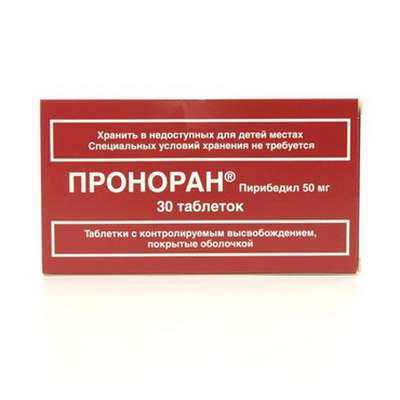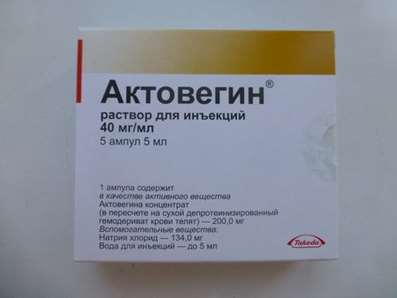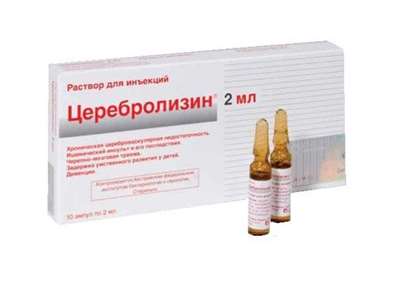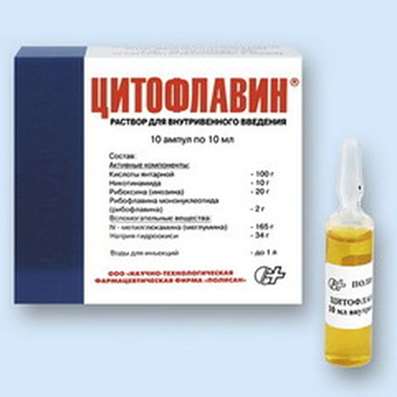Types of pain and painkillers
22 Oct 2016
Neurologist Dr. Doping says about the kinds of pain, the mechanism of action of painkillers and new classes of analgesics. The class of painkillers is very wide, and there are many classifications of medications used in practice. The main analgesics, has its own analgesic effect are paracetamol, non-steroidal anti-inflammatory drugs, or drugs (NSAIDs and NSAIDs), opioids and local anesthetics.
Types of analgesics
For drugs having analgesic properties and is used in the treatment of pain syndromes of different localization, are a means for the relief of pain associated with a change in pain threshold, the damage (or dysfunction) of the structures of the central and peripheral nervous system - is Flupirtine, drugs are a class of antidepressants, a group of anticonvulsants . Drugs without providing analgesia are also used regularly, but enhancing the analgesic effects of other drugs. They include muscle relaxants and antispasmodic drugs.
Strong painkillers classification is based on the principle of the separation of drugs in the Opioid, non-opioid and combined, including Non-Opioid and opioid drugs. Other preparations are so-called adjuvant and symptomatic means to achieve the desired effect with minimal side effects, and in less time. The maximum prevalence of non-opioid drugs are obtained, all of which are non-narcotic, they contribute to the free flow of most drugs without prescription in the pharmacy network.
The peculiarity of our country, in contrast to Europe and America, is a less common use of drugs of paracetamol and unreasonably high purpose antispasmodics. Opioid drugs, most of which relates to drugs, are much less common, which is associated with considerable difficulties appointment procedures and accounting traffic in narcotic drugs. However, despite the fact that in our country accounting narcotic drugs complicates their appointment, in the countries of Europe and America-purpose procedure easier, at the same time records and expert evaluation of the social and psychological characteristics of the patient lie on the shoulders of prescribing medication the doctor, including monitoring the level of the drug in plasma, a record of medications used counting vials and so on. A particular subclass of preparations of Opioids are potent agents that do not have narcotic properties due to their low narcogene potential (low ability to induce psychological dependence), the account of which is easier, which allows them to be used more widely.
Acute and Chronic pain
Pain is just a signal, informing us of the presence of current or potential tissue damage. Depending on the type and kind of pain, pain timing mechanism of the so-called multiple changes of nociceptive transmission that changes the pharmacological media types designated for specific treatment of pain.
If you highlight some of the approaches to the understanding of pain as such, it is necessary to highlight the concept of acute and chronic pain, and the mechanisms of their formation. Acute pain is physiological: it is a signal of danger, informing about local damage. If tissue damage is not too large, then the development of pain is temporary. The mechanism of its formation is simple: develop the activation of peripheral pain receptors (nociceptors or) in damage, is transmitted along the nerves to the posterior horn of the spinal cord, switch to the upward path of the spinal cord and activate the structure of the central nervous system. Reflex response to pain afferent (ascending impulses) is a muscular response (research relationship that evaluates the Nociceptive flexor reflex). As a result, people inadvertently removes the damages area from the danger zone, where the damage is applied.
Chronic pain is the pain that flows longer period of normal healing, often non-obvious damage. It chronic pain is now a significant social, economic and naturally medical problem.
In this key role played by a specific pathophysiological mechanisms of the type of pain. This occurrence or activation of so-called inflammatory cascade passing through the enzyme cyclooxygenase (COX), which has two isoforms (COX-1 and COX-2), the effect which is associated with both the analgesic effect of NSAIDs which inhibit COX, and with the development of side reactions from the gastrointestinal tract (risk of exacerbations of peptic ulcer or gastritis, mainly related to isoform 1), as well as the possibility of increasing the risk of thrombosis, mostly related to isoform 2.
Changes occur in chronic pain and CNS level: super-strong and long excitation of peripheral nociceptors leads to sensitization of the central nociogene structures that then even a weak signal react pronounced and persistent excitation. Central sensitization mediated inflammatory mediators: for pains - such as tumor necrosis factor α (FNOα), interleukin (IL) 1 and 6, and PGE2. There is a change in the properties of neuronal membranes; in this process, great importance is attached glutamate receptors (NMDA - N-methyl-D-aspartate receptors) and so-called slow calcium channels.
Local inflammation, peripheral and central sensitization are normal adaptive mechanisms necessary for the recovery of damages. At the same time, these changes or modifications are run during the development of chronic pain.

Nociceptive, neuropathic pain and dysfunctional
Another important classification, the application of which in clinical practice can reduce the recovery period of the patient, - the division of pain on the mechanisms of damage (known as the pathophysiological classification) on the nociceptive, neuropathic and dysfunctional.
Nociceptive pain is usually well localized, because the damage caused by the specific structures. For nociceptive pain is characterized by the connection with the movement and activity, the pain can be amplified or, alternatively, substantially decrease or even disappear when moving and change the physical state, a change in body position. Nociceptive pain can be divided into inflammatory, mechanical and ischemic.
Neuropathic pain is uncertain, it is difficult for patients to specify its precise location. It differs significantly intensity and vivid emotional coloring. Patients give it different characteristics, describe the words, descriptors, "burning", "cutting", "a cooling", "like an electric shock," "dumb," "which reduces". For neuropathic pain characterized by a combination of increased excitability of the structures of the peripheral nervous system and central nervous system disorders, and sensitivity. There have been phenomena of hyperalgesia (pain severe reaction to a small painful stimuli), allodynia (pain in the appearance of non-painful stimulus), hypo and anesthesia, as well as paresthesia (sensation of crawling, itching, numbness, and so on).
Frequent examples of neuropathic pain is pain in diabetic neuropathy, post-herpetic neuropathy, trigeminal neuralgia, with radiculopathy, compression-ischemic, or tunnel, neuropathy (carpal tunnel syndrome).
Dysfunctional nociceptive pain may resemble, but without damaging the organic tissue. For this type of pain is characterized by a mismatch between the severity of the patient's suffering and physical examination data. Long-term pain or other cause reduces the brake anti-nociceptive signals (dezingibition), which is manifested by increased excitability of pain neurons (central sensitization). Dysfunctional pain often accompanied by symptoms characteristic of neuropathic pain, in particular hyperalgesia and allodynia.
Action of painkillers
The mechanical and ischemic pain develops within nociceptive pain also requires treatment of local pain source to destination and symptomatic treatment may NSAIDs.
Neuropathic pain - in addition to drug therapy causes of pain (eg, use of adequate doses of antiviral drugs for post-herpetic neuralgia), you need a local effect on the source of the pain, if any (for example, the study of the level of compression in the tunnel neuropathy, radiculopathy, the use of local treatments: therapeutic blockades, perineural blockade, epidural and foraminal blockades, muscular blockade during compression of the nerve to the muscle-tendon tunnel), as well as the prescriptions of anticonvulsants and antidepressants groups operating, in addition to the nociceptive structures (perceiving and transmitting the pain) for antinociceptive structures (suppress pain).
Therapy dysfunctional pain may also include the appointment of anticonvulsants and antidepressants, but, in addition, must always be carried out with the participation of specialists in related disciplines, who are responsible for the area of pain (otolaryngologist, dentist, orthodontist when facial pain, for example), and the psychiatrist, whose participation is necessary to assess affective responses to chronic pain.
We recommend you to use Phenotropil and Meldonium.
The history of the study of painkillers
"Gold" during the study of pain syndromes began in the second half of the XX century, which is connected with the development of evidence-based and evidence-based medicine, and the beginning of the formation of the modern understanding of the rules of the organization and the adequate preparation of the design of clinical trials.
Currently, research concerning analgesic conducted to obtain their efficacy and safety data, as for relatively new drugs and comparisons with existing performance "gold standard." Given the frequency of occurrence query RCTs (randomized clinical trials) regarding the use of analgesics, maximum results will be available in the class of NSAIDs. And the frequency of occurrence of such data is only growing. This is due not so much with the discovery of innovative medicines, as with the creation of new "drugs-copies" - generics, which contain the same chemical as the main active ingredient, the so-called international non-proprietary name (INN). Internet is full of messages, which essentially boils down to finding a cheaper counterpart, at the same time forget that often not only INN determines the effect of the drug, but the mechanism of its processing, pharmacokinetics and pharmacodynamics of the drug, but the data on the bioequivalence of generic original drug is not always inspire confidence in generics, and not always this information is available.
The history of the drug from the class of NSAIDs begins with the XVII century, with extensive use of quinine, which has anti-inflammatory and analgesic properties. In 1763 Edward Stone investigated the efficacy of willow bark extract as an alternative to quinine. And a hundred years later, willow bark extract was actively used as an anesthetic. From 1824-1829 years due a lot of work, informing the first isolated from the bark of willow substances - salicylate, which, in fact, was the birth of the NSAID class. Since 1860, Kolbe - Schmitt has become the main method for the synthesis of salicylic acid. The first synthetic NSAIDs became antipyrine (phenazone), which appeared in the 14 years before his more famous brother - aspirin - and stayed on the pharmacological market to date. Next was the invention amidopirina (pyramidon) in 1893, which has become the "gold standard" and entered the folklore, films and performances satirists.
Further development of pharmacological analgesics market proceeded by leaps and bounds, encountering only to certain complications inherent to each class of drugs. So, myelotoxicity has blocked the development of pyrazolone derivatives, the use of Metamizole was limited due to possible haematological problems, drug fenibutazon incurred in 1949, also received the restrictions on the use of myelotoxicity, and the first time it were marked systemic complications of ulcerative. Phenacetin, produced in 1878, as it turned out much later, had high neurotoxic and increases the risk of cancer.
Thus, by the 70-80-th years of XX century the most significant complication of another "gold standard" - acetylsalicylic acid - were LCD complications. That severity ulcerogenicity new NSAIDs compared with the existing. The next significant step was the discovery of two isoforms of the enzyme cyclooxygenase and creation of coxibs - selective inhibitors of COX-2. The emergence of this class of NSAIDs was held under the supervision of clinical trials SUCCESS-1 study were further volume MEDAL, CONDOR, APPROVe, VIGOR, in which revealed the complications associated with the risk of thrombotic complications, later called a "crisis of coxibs." Currently, safety assessment studies of NSAIDs and drugs available on the market confirm the relative safety of drugs when there are reasonable limits to their use due to the potential risk of adverse reactions.
Strongest painkillers
Of the class of painkillers are the strongest opioid analgesics, while at the same time, given the current perception of pain as a multidisciplinary problem, the purpose of opioid analgesic does not always guarantee adequate treatment of pain with a reflex muscle response or myofascial syndrome (muscular-tonic syndrome) altered movement patterns (kinesis-phobic disorder, protective in nature and involved in chronic pain) and changes in emotional and affective reactions.
At the same time, many studies on the effectiveness of NSAIDs are now led to the understanding of NSAID comparable efficiency at different risks therapy, subject to the dosing regimen and prescribing the length depending on the pharmacokinetics and pharmacodynamics of specific drugs and their dosage forms.
Prospects painkillers
Despite more than a century of use of analgesics in the pharmacological era of continuing studies of various new classes of drugs with analgesic activity, - are drugs that act on different pathophysiological stages of the formation of pain (nociceptive system), as well as investigates drugs with activity against structures suppressing pain transmission (antinociceptive system).
At the same time the maximum value in everyday clinical practice, attempts have recently alleviate requirements for registration of the destination party nomenclature opioid. However, each innovation is the obverse side. When commutation rules destination opioid load the application of control responsibility, purpose, adequate definition readings will fall on the shoulders of doctors. Will like to be perceived by practitioners, can the primary care physicians to comply with sequential therapy, to identify the source and pathophysiological mechanism of pain adequately pass all stages of the first treatment, correctly explain to the patient the task pain therapy, the timing of the effect, to evaluate the presence of psychosocial Destination risk factors narcotic and opioid drugs and, finally, select the opioid analgesic, follow the correctness of its application - time will tell.

 Cart
Cart





